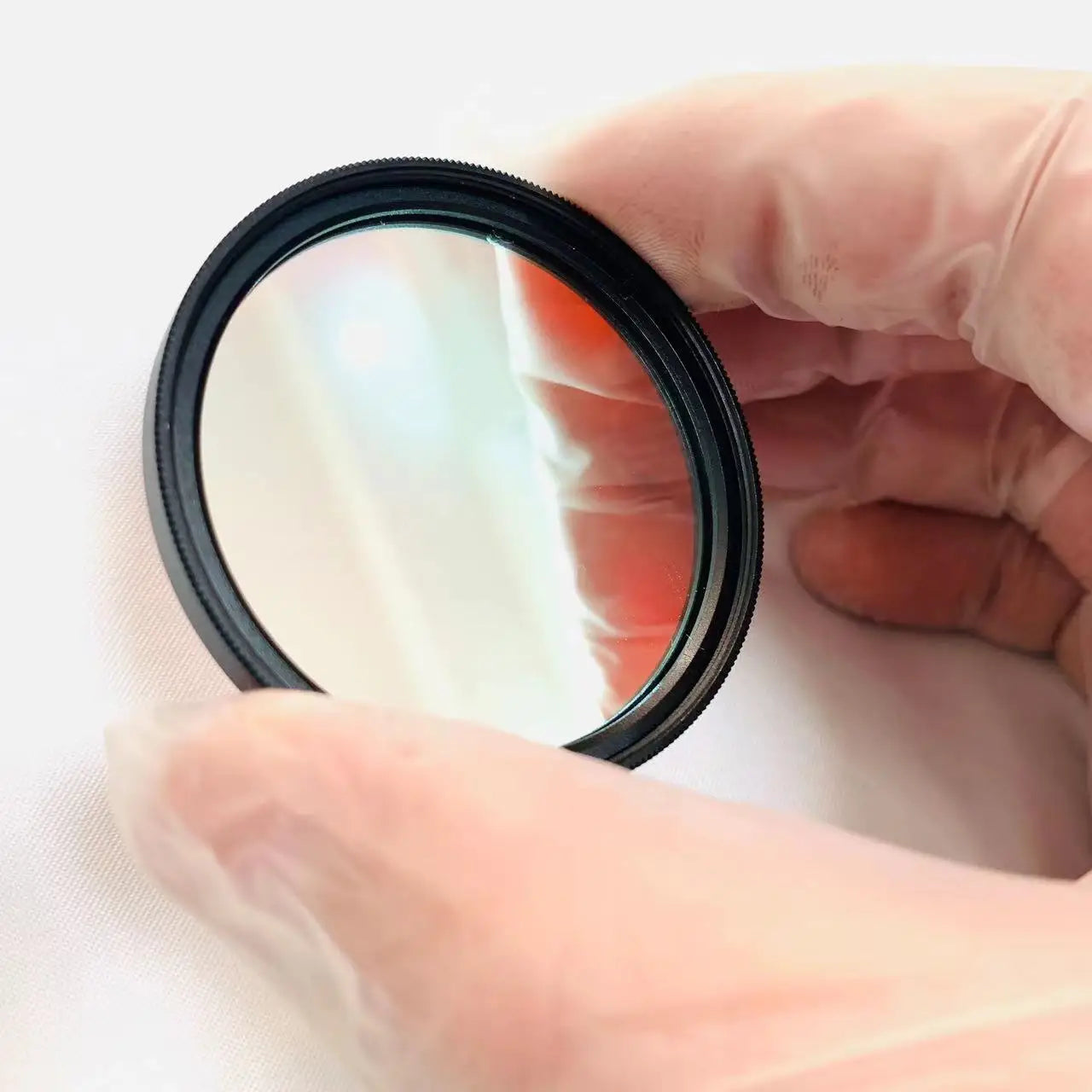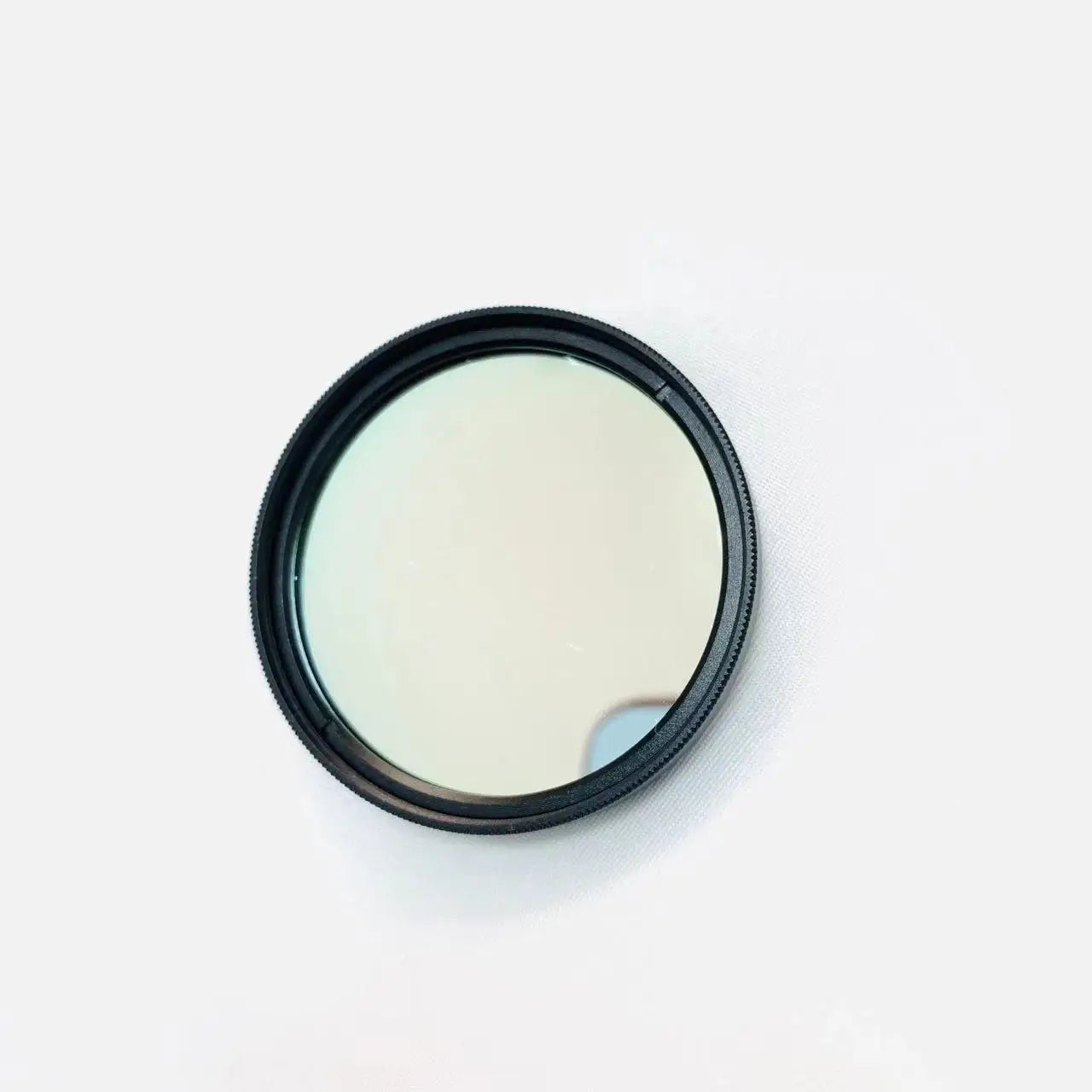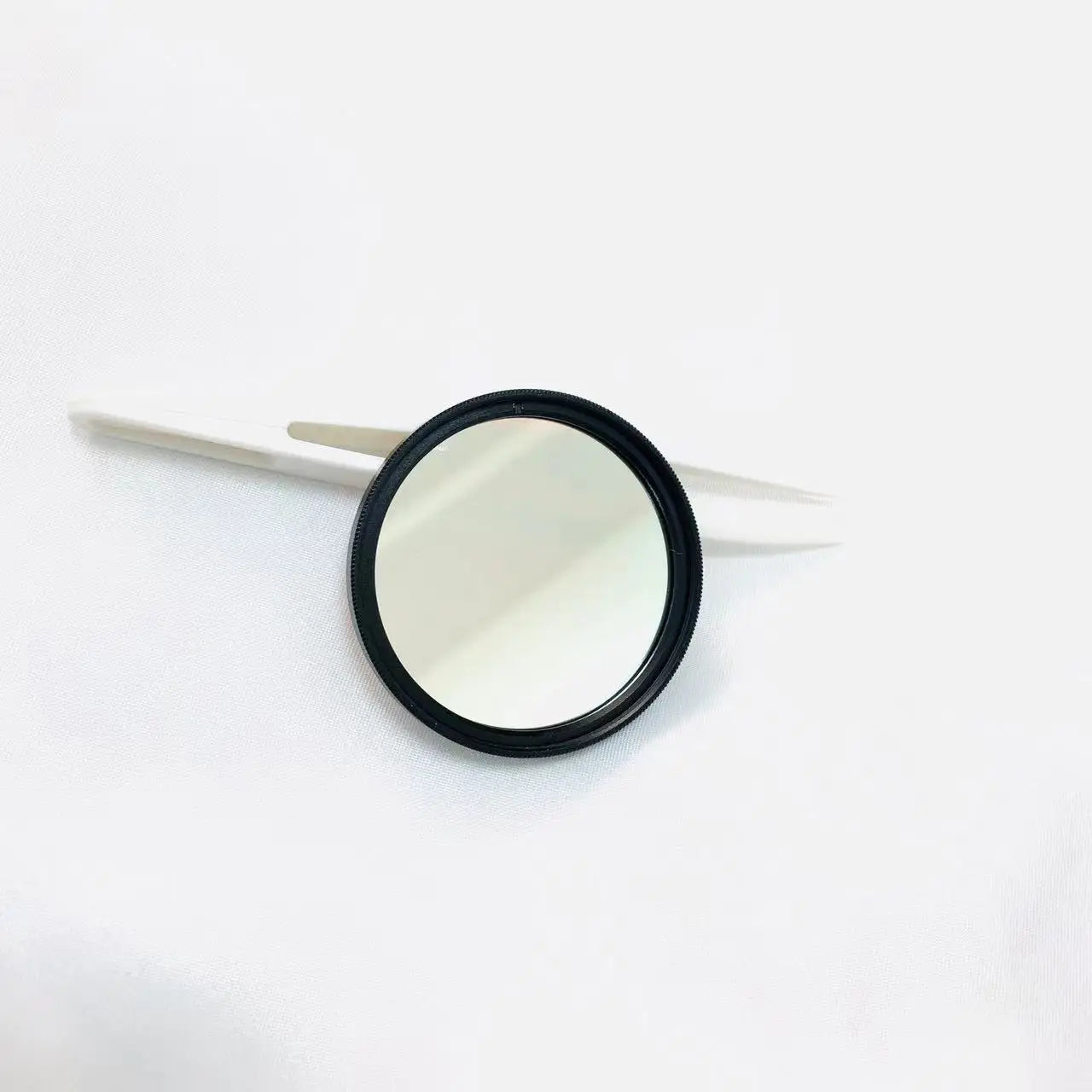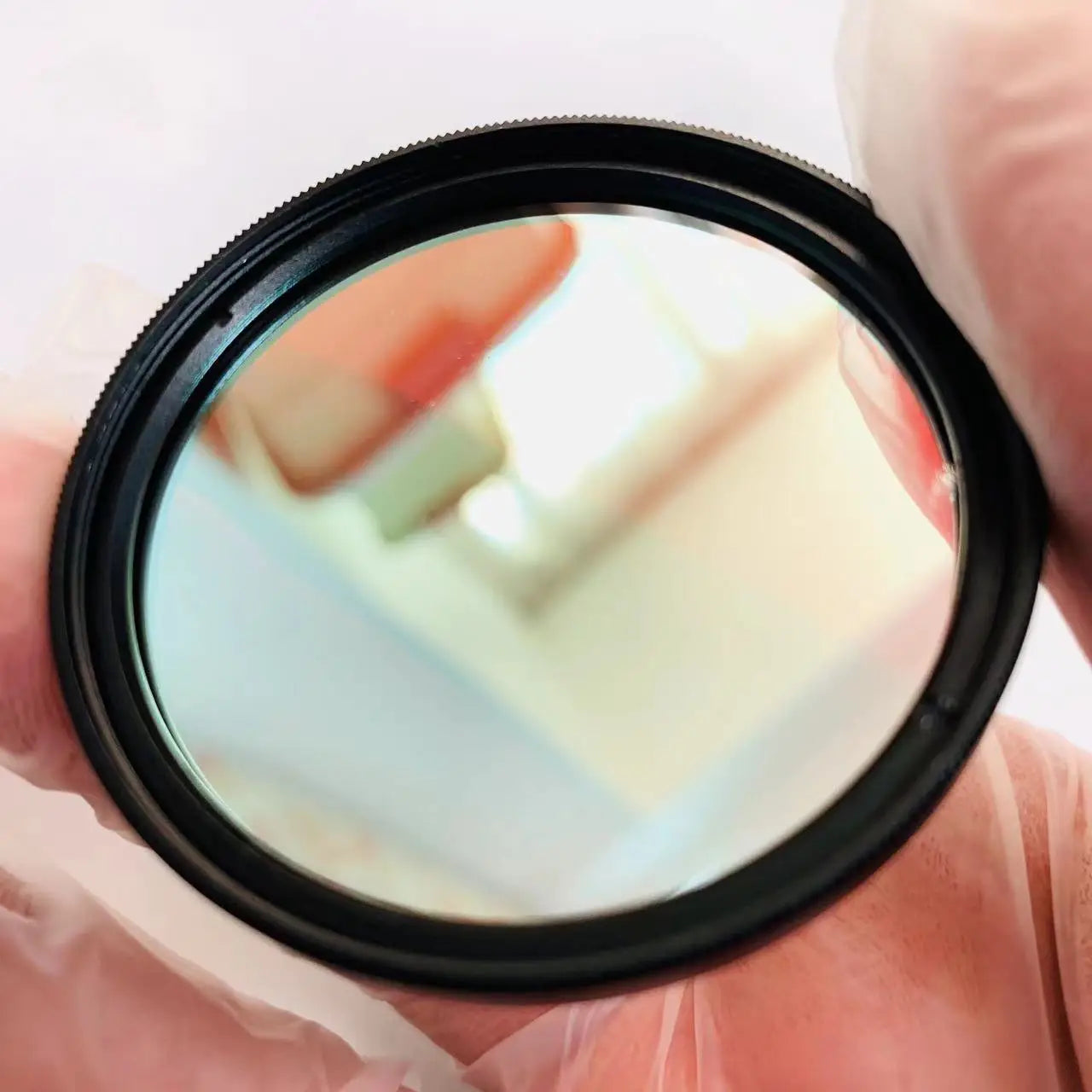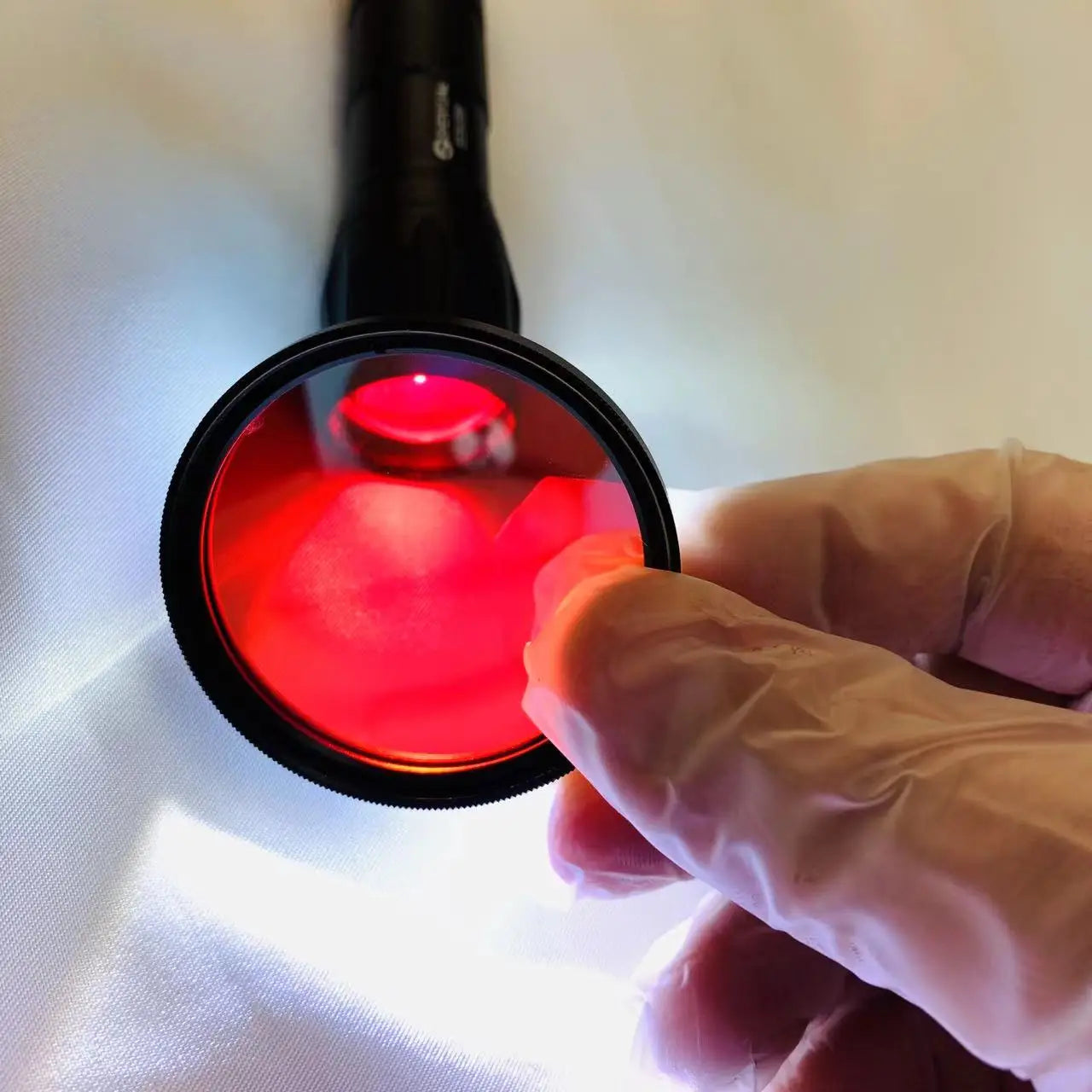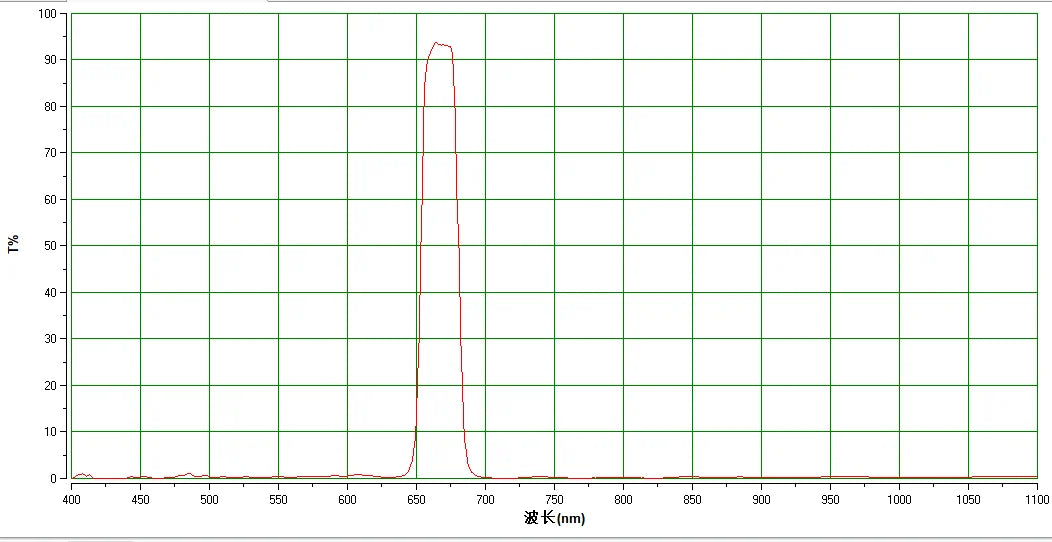Astrophotography Filter
SII Filter 52mm
SII Filter 52mm
FREE SHIPPING
Couldn't load pickup availability
SII Filter 52mm for Astrophotography
The SII Filter 52mm is a must-have tool for astrophotographers aiming to capture the intricate details of distant galaxies, nebulae, and other celestial objects with unmatched precision and clarity. This filter, crafted with cutting-edge technology, stands as a testament to quality and innovation, making it an indispensable tool for both professional and enthusiast astrophotographers. The SII Filter helps reveal celestial phenomena that are invisible to the naked eye or standard camera equipment, allowing you to photograph the wonders of the cosmos like never before.
Features of the SII Filter 52mm
The SII Filter 52mm comes equipped with a range of features that make it an essential accessory for astrophotography:
- Narrow-Band High Pass Filter: Specially designed to focus on the Sulfur-II (SII) emission line at 672nm, this filter isolates specific wavelengths of light, enhancing image detail and contrast.
- High-Quality Optical Glass: Ensures exceptional clarity and precision, minimizing distortion and aberrations for sharper, more detailed images.
- Durable Metal Frame: Provides robust protection and stability, ensuring longevity and reliability even in demanding outdoor conditions.
- 52mm Size: Compatible with a wide range of DSLR cameras, providing versatility and ease of use for astrophotographers.
Applications of the SII Filter
The SII Filter 52mm is versatile and can be used in various astrophotography applications:
- Deep Sky Imaging: Ideal for capturing detailed images of emission nebulae, planetary nebulae, and supernova remnants where SII emissions are prominent.
- Scientific Research: Useful for both amateur and professional astronomers studying the ionized sulfur emissions in celestial objects.
Benefits of Using the SII Filter
Incorporating the SII Filter 52mm into your astrophotography kit offers significant benefits:
- Improved Image Quality: By focusing on the SII emission line, the filter enhances the visibility of specific celestial features, resulting in clearer and more detailed images.
- Reduction of Light Pollution: Its narrow-band design minimizes the impact of artificial light, making it suitable for use in urban environments.
- Increased Contrast: Improves the contrast of your astrophotography captures, making it easier to distinguish fine details in the night sky.

What the SII Filter is Used For
The primary use of the SII Filter 52mm is to observe and photograph specific deep-sky objects:
- Emission Nebulae: Where ionized sulfur is prevalent, providing stunning, high-contrast images.
- Star-Forming Regions: Highlighting the processes and structures within these dynamic areas.
- Supernova Remnants: Capturing the intricate details of the aftermath of stellar explosions.
Usage Guidelines for the SII Filter
To achieve the best results with the SII Filter 52mm:
- Attach the Filter: Securely attach the filter to your camera’s 52mm threaded lens.
- Adjust Camera Settings: Use long exposure settings to capture faint celestial details.
- Select the Right Environment: Choose a dark sky location, far from city lights, for optimal results.
Perfect Fit for Camera Lenses with a 52mm Thread
The SII Filter 52mm is designed to fit any camera lens with a 52mm thread perfectly, ensuring a secure and stable connection that prevents light leakage and maintains image integrity.
Expert Tips for Maximizing the SII Filter’s Potential
- Accurate Focusing: Ensure your camera’s focus is precise to make the most of the filter’s capabilities.
- Experiment with Exposures: Different celestial objects may require varying exposure times to reveal their best details.
- Regular Maintenance: Keep the filter and lens clean to avoid dust spots that could impair image quality.
Frequently Asked Questions
Q1: Can the SII Filter be used during the day?
- No, the SII Filter is designed specifically for nighttime use and focusing on emissions not visible during daylight hours.
Q2: Is the SII Filter compatible with all DSLR cameras?
- The filter fits any camera with a 52mm threaded lens, making it versatile across various brands and models.
Q3: How does the SII Filter impact the colors in my photos?
- It enhances red hues by isolating the Sulfur-II emission line, adding depth and contrast to images of certain celestial objects.
Detailed Applications of the SII Filter 52mm
The SII Filter 52mm can be utilized in a wide range of astrophotography applications to produce breathtaking images of the night sky:
Emission Nebulae
Emission nebulae are clouds of ionized gas that emit light of various colors. These nebulae are often found in regions of active star formation, making them prime targets for the SII Filter. The high-energy radiation from young, hot stars ionizes the surrounding gas, causing it to glow. The SII Filter 52mm is particularly effective in capturing the specific emission line of SII at 672nm, which is prevalent in these regions.
HII Regions
HII regions are large clouds of gas and plasma ionized by ultraviolet light from high-mass, young stars. These regions are named after the ionized hydrogen they contain (HII refers to ionized hydrogen). SII emission is a significant component of the spectra of HII regions, contributing to the characteristic red color of these regions in many astronomical images. The SII Filter 52mm helps isolate and capture these emissions, providing detailed and high-contrast images of HII regions.
Planetary Nebulae
Planetary nebulae are formed when a star at the end of its life expels its outer layers into space, leaving behind a hot core that ionizes the ejected material. The glowing shell of ionized gas often contains SII, which can be detected through its emission lines. Planetary nebulae are rich in various ionized gases, including sulfur, oxygen, and nitrogen. The SII Filter 52mm allows you to capture the intricate details of these nebulae, showcasing their unique structures and colors.
Supernova Remnants
Supernova remnants are the expanding shells of gas and dust resulting from the explosion of a star in a supernova event. These remnants contain a variety of ionized elements, including sulfur. The shock waves from the supernova explosion ionize the surrounding material, causing it to emit radiation at various wavelengths, including the SII emission line. The SII Filter 52mm is ideal for capturing the fine, filamentary structures of ionized gas in supernova remnants, providing stunning and detailed images.
Diffuse Ionized Gas (DIG)
Diffuse ionized gas is a widespread component of the interstellar medium, found in the spaces between stars in galaxies. It is ionized by the cumulative effect of radiation from many stars. SII emission is observed in the diffuse ionized gas, contributing to our understanding of the overall ionization state and composition of the interstellar medium. The SII Filter 52mm helps isolate and capture these emissions, providing valuable data for astrophotographers and astronomers.
Star-Forming Regions
Star-forming regions, such as the famous Orion Nebula (M42), are hotbeds of activity where new stars are being born. These regions are rich in ionized gases, including SII. The intense radiation from newly formed stars ionizes the surrounding material, leading to the characteristic emission lines observed in these regions. The SII Filter 52mm allows you to capture the intricate details and structures within star-forming regions, showcasing their dynamic and vibrant nature.
Understanding the Science Behind the SII Filter
The SII (Sulfur-II) emission line is an important spectral line in astrophotography, particularly for imaging certain types of nebulae and star-forming regions. The SII filter captures light at a wavelength of 672 nm, which is emitted by ionized sulfur atoms. This specific emission line is often observed in regions of active star formation, supernova remnants, and other ionized gas regions in space.
Emission Nebulae and Star-Forming Regions
Sulfur-II is commonly found in emission nebulae, which are clouds of ionized gas that emit light of various colors. These nebulae are often found in regions of active star formation, where the high-energy radiation from young, hot stars ionizes the surrounding gas, causing it to glow. The SII emission line at 672 nm is particularly strong in these regions, making them prime targets for SII imaging.
HII Regions and Planetary Nebulae
HII regions are large clouds of gas and plasma ionized by ultraviolet light from high-mass, young stars. These regions are named after the ionized hydrogen they contain (HII refers to ionized hydrogen). SII emission is a significant component of the spectra of HII regions, contributing to the characteristic red color of these regions in many astronomical images.
Planetary nebulae are formed when a star at the end of its life expels its outer layers into space, leaving behind a hot core that ionizes the ejected material. The glowing shell of ionized gas often contains SII, which can be detected through its emission lines. Planetary nebulae are rich in various ionized gases, including sulfur, oxygen, and nitrogen. The SII Filter 52mm allows you to capture the intricate details of these nebulae, showcasing their unique structures and colors.
Supernova Remnants and Diffuse Ionized Gas
Supernova remnants are the expanding shells of gas and dust resulting from the explosion of a star in a supernova event. These remnants contain a variety of ionized elements, including sulfur. The shock waves from the supernova explosion ionize the surrounding material, causing it to emit radiation at various wavelengths, including the SII emission line. The SII Filter 52mm is ideal for capturing the fine, filamentary structures of ionized gas in supernova remnants, providing stunning and detailed images.
Diffuse ionized gas is a widespread component of the interstellar medium, found in the spaces between stars in galaxies. It is ionized by the cumulative effect of radiation from many stars. SII emission is observed in the diffuse ionized gas, contributing to our understanding of the overall ionization state and composition of the interstellar medium. The SII Filter 52mm helps isolate and capture these emissions, providing valuable data for astrophotographers and astronomers.
Popular Sulfur-II (SII) Targets for Astrophotography
Sulfur-II (SII) is an important emission line in astrophotography, particularly for imaging certain types of nebulae and star-forming regions. The SII filter captures light at a wavelength of 672 nm, which is emitted by ionized sulfur atoms. This allows astrophotographers to highlight specific structures within these celestial objects. Here are some popular targets for SII imaging:
-
The Orion Nebula (M42)
- Location: Constellation Orion
- Description: The Orion Nebula is one of the brightest and most well-known nebulae in the night sky. It is a massive star-forming region located about 1,344 light-years from Earth. The nebula contains a high concentration of ionized gases, including sulfur, making it an ideal target for SII imaging. The intricate details of the gas and dust clouds can be beautifully captured with an SII filter.
-
The Eagle Nebula (M16)
- Location: Constellation Serpens
- Description: Famous for the "Pillars of Creation" feature, the Eagle Nebula is a region of active star formation approximately 7,000 light-years away. The SII emissions in this nebula highlight the dense regions of gas and dust where new stars are being born. The SII filter helps to reveal the fine structures within these pillars and the surrounding nebula.
-
The Lagoon Nebula (M8)
- Location: Constellation Sagittarius
- Description: The Lagoon Nebula is a large emission nebula located about 4,100 light-years from Earth. It is rich in hydrogen, sulfur, and oxygen, making it an excellent target for narrowband imaging. The SII filter can capture the detailed structures within the nebula, emphasizing the regions where ionized sulfur is prevalent.
-
The Trifid Nebula (M20)
- Location: Constellation Sagittarius
- Description: The Trifid Nebula is a unique combination of an emission nebula, a reflection nebula, and a dark nebula. Located about 5,200 light-years away, it is a complex target with rich detail. The SII emissions highlight the areas of active star formation and ionized gas, providing a deeper look into its complex structure.
-
The Crab Nebula (M1)
- Location: Constellation Taurus
- Description: The Crab Nebula is a supernova remnant located about 6,500 light-years from Earth. It is the result of a supernova explosion observed in 1054 AD. The nebula is a rich source of SII emissions, which can be captured to reveal the filamentary structures of ionized gas expanding outward from the explosion.
-
The Rosette Nebula (Caldwell 49)
- Location: Constellation Monoceros
- Description: The Rosette Nebula is a large, circular HII region located about 5,200 light-years from Earth. The SII filter is particularly useful in capturing the intricate structures and star-forming regions within the nebula. The combination of SII, H-alpha, and OIII data can create stunning images showcasing the nebula's beauty.
-
The Veil Nebula
- Location: Constellation Cygnus
- Description: The Veil Nebula is a supernova remnant that consists of several parts, including the Eastern Veil (NGC 6992) and the Western Veil (NGC 6960). It is located about 2,400 light-years away. SII imaging of the Veil Nebula can reveal the fine, filamentary structures of ionized gas, providing insight into the remnants of the supernova explosion.
-
The Heart Nebula (IC 1805)
- Location: Constellation Cassiopeia
- Description: The Heart Nebula is an emission nebula located about 7,500 light-years from Earth. It is part of a larger complex that includes the Soul Nebula. The SII filter can capture the rich details of ionized sulfur within the nebula, highlighting the regions of active star formation and the intricate structures of the gas clouds.
-
The Soul Nebula (IC 1848)
- Location: Constellation Cassiopeia
- Description: Located near the Heart Nebula, the Soul Nebula is another region of active star formation. It is rich in ionized gases, including sulfur, making it a great target for SII imaging. The filter helps to bring out the details of the nebula's structure and star-forming regions.
-
The Pelican Nebula (IC 5070)
- Location: Constellation Cygnus
- Description: The Pelican Nebula is an emission nebula located about 1,800 light-years from Earth. It is part of the same molecular cloud complex as the North America Nebula. The SII filter is useful in capturing the fine details of the ionized gas structures within the nebula, providing a detailed look at the star formation processes occurring there.
Why You Should Buy the SII Filter 52mm
The SII Filter 52mm is an essential tool for astrophotographers seeking to capture the hidden beauty of the cosmos. By isolating the SII emission line, this filter enhances the visibility of celestial details, reduces light pollution, and increases image contrast, making it a valuable investment for both beginners and experienced astrophotographers.
Important Note: Not for Solar Use
The SII Filter 52mm is not designed for solar observation or photography. Using it to view the sun can result in serious eye damage and harm to your camera equipment.
Technical Specifications
- Wavelength: 672nm
- Filter Type: Narrow-Band High Pass Filter
- Frame Material: Durable Metal
- Optical Glass: Premium Quality
- Size: 52mm
What’s Included in the Package?
When you purchase the SII Filter 52mm, you will receive:
- 1 x SII Filter 52mm
- 1 x Durable Protective Case
Order Your SII Filter 52mm Today!
Transform your astrophotography with the SII Filter 52mm. Capture the universe with unmatched clarity and detail, revealing the intricate beauty of celestial objects. Whether you're a professional photographer or an enthusiastic amateur, this filter will significantly improve your astrophotography results. Order now and elevate your celestial photography to new heights!
Share
